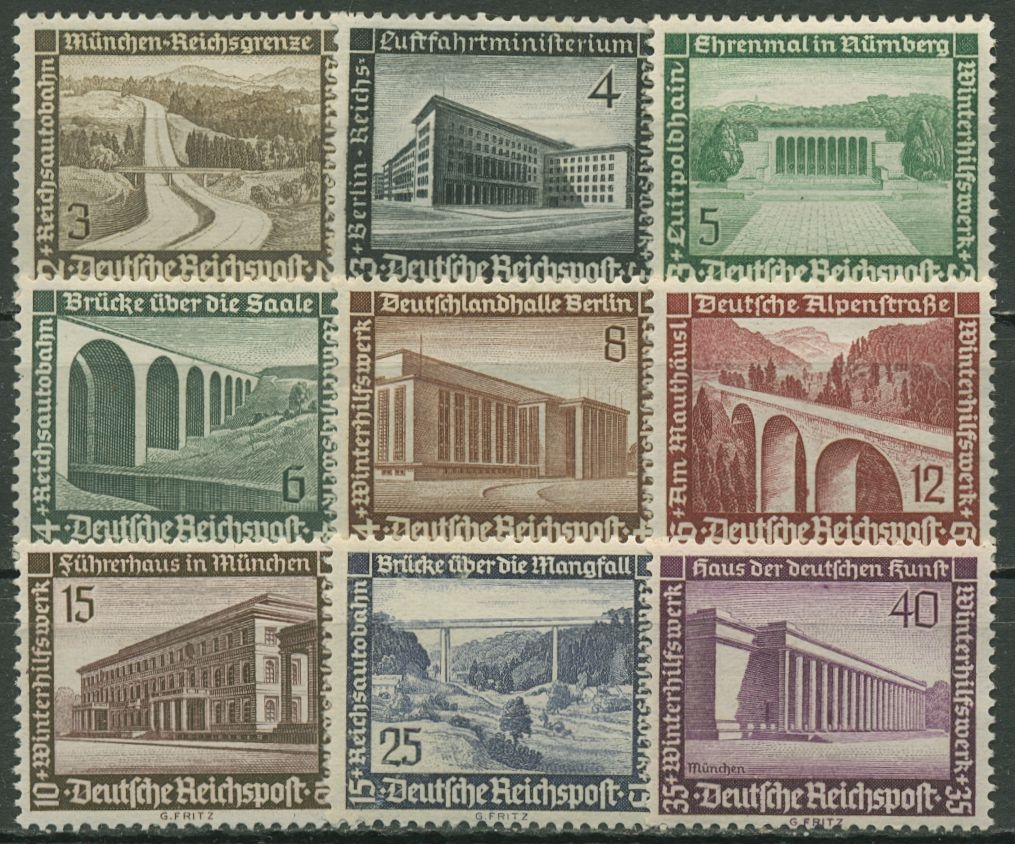Source

Source: Winterhilfswerk Stamps, “Modern Buildings,” 1936.
National symbols and nods to German heritage were important parts of cultivating a culture of nationalism and a popular commitment to the racial community. The methods used to achieve this end were varied, from overt to subtle. One example of a multifaceted artifact can be found in postage stamps, a sample of which is pictured here. These particular stamps, printed in the fall of 1936, functioned on two levels: first, proceeds from their sale went to benefit the Winterhilfswerke (Winter Relief Fund), a social program operated by the National Socialist People’s Welfare Organization, which collected funds to provide social assistance to Germans in need. Purchasing these stamps thereby connected Germans to this program and encouraged the belief that they were all connected to a larger racial community. Second, the stamps tied Germans to landscape: the stamps pictured the facades of a number of prominent buildings which featured the classical influences that were a staple of the “new” Nazi architectural style, as well as several natural landscapes, each depicting the idyllic blending of nature and modern construction, like highway bridges. More than simply promoting the mere coexistence of modernity and nature, such images were meant to venerate the German capacity to shape the landscape according to German wishes through modern architectural form, such as the expansive Autobahn projects that were designed to connect Germans and to give them a sense of having an intimate connection with nature as they drove through the countryside. Consequently, images like these were intended to breathe life into Nazi ideas about authority, national power, and cultural greatness.

Source: Winterhilfswerk Stamps, “Modern Buildings,” 1936.